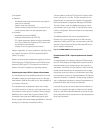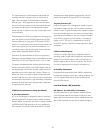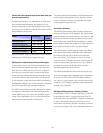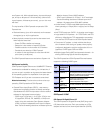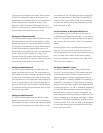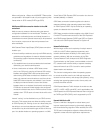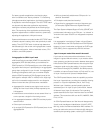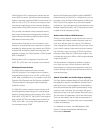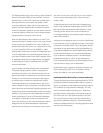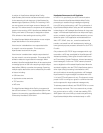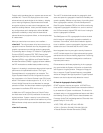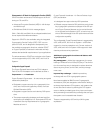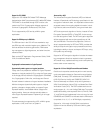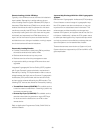OSA-Express for NCP, supporting the channel data link
control (CDLC) protocol, provides connectivity between
System z operating systems and IBM Communication Con-
troller for Linux (CCL). CCL allows you to keep your busi-
ness data and applications on the mainframe operating
systems while moving NCP functions to Linux on System z.
CCL provides a foundation to help enterprises simplify
their network infrastructure while supporting traditional
Systems Network Architecture (SNA) functions such as
SNA Network Interconnect (SNI).
Communication Controller for Linux on System z is the
solution for companies that want to help improve network
availability by replacing token-ring networks and ESCON
channels with an Ethernet network and integrated LAN
adapters on System z10, OSA-Express3 or OSA-Express2
GbE or 1000BASE-T.
OSA-Express for NCP is supported in the z/OS, z/VM,
z/VSE, TPF, z/TPF, and Linux on System z environments.
OSA Integrated Console Controller
The OSA-Express Integrated Console Controller
(OSA-ICC) support is a no-charge function included in
Licensed Internal Code (LIC) on z10 EC, z10 BC, z9 EC,
z9 BC, z990, and z890 servers. It is available via the OSA-
Express3, OSA-Express2 and OSA-Express 1000BASE-
T Ethernet features, and supports Ethernet-attached
TN3270E consoles.
The OSA-ICC provides a system console function at IPL
time and operating systems support for multiple logical
partitions. Console support can be used by z/OS, z/OS.e,
z/VM, z/VSE, z/TPF, and TPF. The OSA-ICC also supports
local non-SNA DFT 3270 and 328x printer emulation for
TSO/E, CICS, IMS
™
, or any other 3270 application that
communicates through VTAM
®
.
With the OSA-Express3 and OSA-Express2 1000BASE-T
Ethernet features, the OSA-ICC is confi gured on a port by
port basis, using the Channel Path Identifi er (CHPID) type
OSC. Each port can support up to 120 console session
connections, can be shared among logical partitions using
Multiple Image Facility (MIF), and can be spanned across
multiple Channel Subsystems (CSSs).
Remove L2/L3 LPAR-to-LPAR Restriction
OSA port sharing between virtual switches can communi-
cate whether the transport mode is the same (Layer 2 to
Layer 2) or different (Layer 2 to Layer 3). This enhance-
ment is designed to allow seamless mixing of Layer 2 and
Layer 3 traffi c, helping to reduce the total cost of network-
ing. Previously, Layer 2 and Layer 3 TCP/IP connections
through the same OSA port (CHPID) were unable to com-
municate with each other LPAR-to-LPAR using the Multiple
Image Facility (MIF).
This enhancement is designed to facilitate a migration
from Layer 3 to Layer 2 and to continue to allow LAN
administrators to confi gure and manage their mainframe
network topology using the same techniques as their non-
mainframe topology.
OSA/SF Virtual MAC and VLAN id Display Capability
The Open Systems Adapter/Support Facility (OSA/SF) has
the capability to support virtual Medium Access Control
(MAC) and Virtual Local Area Network (VLAN) identifi ca-
tions (IDs) associated with OSA-Express2 feature confi g-
ured as a Layer 2 interface. This information will now be
displayed as a part of an OSA Address Table (OAT) entry.
This information is independent of IPv4 and IPv6 formats.
There can be multiple Layer 2 VLAN Ids associated to a
single unit address. One group MAC can be associated to
multiple unit addresses.
For additional information, view IBM Redbooks, IBM
System z Connectivity Handbook (SG24-5444) at:
www.redbooks.
ibm.com
/.
31



